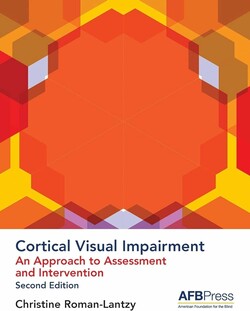Cortical Visual Impairments

Cortical Visual Impairment (CVI) is one of "the most common causes of visual impairment for children in the USA" (Corn & Erin, Eds., 2010). According to Roman-Lantzy (2018), CVI describes a type of visual impairment where parts of the brain may have sustained an injury or have a neurological condition that affects the visual system causing a difficulty with accessing the visual aspects of the world which impacts education and learning (Roman-Lantzy, 2018). CVI is not associated with the eye itself (Roman-Lantzy, 2018).
CVI may also be referred to as Cerebral Visual Impairment but it is not the same.
Be sure to consult with your qualified Teacher for Students with Visual Impairments (TSVI) if your student has CVI. Your TSVI will be able to help you develop an appropriate program with activities that will be helpful in addressing the visual and behavioural characteristics associated with CVI.
The following learning resources focus on supporting students who have CVI.
The Bridge School has modules and resources on CVI. To access archived webinars from the Bridge School you'll need to register with the school.
Paths to Literacy - CVI Friendly Videos
Paths to Literacy hosts some videos that may be of interest to your student.
Cerebral Visual Impairment: Cortical Visual Impairments are a subset of Cerebral Visual Impairments. To learn more about Cerebral Visual Impairments, check out CVI Scotland. This website has good information, including a lot from Dr. Gordon Dutton.
A collection of literacy materials specific for students with unique sensory requirements.
References
Corn, A. L., & Erin, J. N. Eds. (2010). Foundations of low vision: Clinical and functional perspectives. 2nd Ed. New York, NY: AFB Press.
Roman-Lantzy, C. (2018). Cortical visual impairment: An approach to assessment and intervention. 2nd Ed. New York, NY: AFB Press.